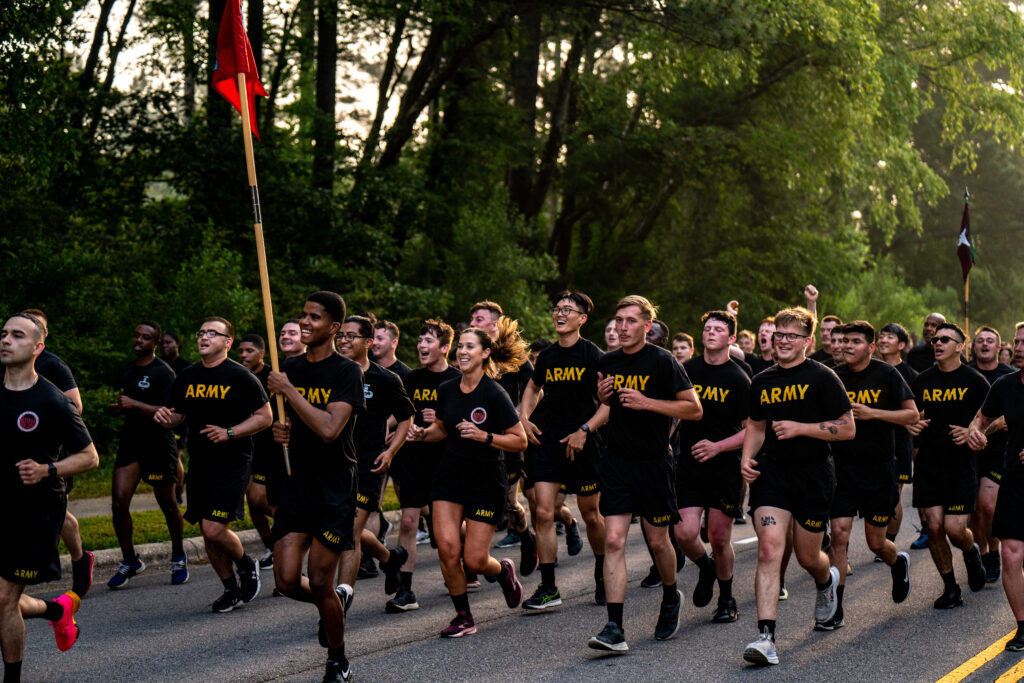The U.S. Army doesn’t just operate on strength and skill—it thrives on a time-tested command structure that keeps every mission on track and every Soldier ready for action. This isn’t just a bunch of ranks and titles—it’s a finely tuned system of leadership, communication, and teamwork that ensures the Army can respond to any challenge, anywhere, anytime. Whether you’re a Future Soldier, a proud Army family member, or just curious about how the military works, understanding this structure will help you see exactly how the Army gets the job done.
The Chain of Command
At the heart of the Army’s organization is the chain of command—a clear line of authority from the highest-ranking leader to the newest recruit. This is how orders flow quickly, clearly, and effectively, ensuring that missions are completed and Soldiers stay safe.
Commander-in-Chief: At the very top is the President of the United States, the civilian leader who has ultimate authority over the military.
Civilian Leadership: Next comes leaders like the Secretary of Defense and the Secretary of the Army—civilians who set strategic goals and ensure the Army is ready for anything.
Military Leadership: Generals, colonels, captains, and lieutenants put those orders into action, leading from the front and making critical decisions.
Non-Commissioned Officers (NCOs): The backbone of the Army, NCOs lead, train, and guide Soldiers every day, serving as the essential link between officers and enlisted troops.
Enlisted Soldiers: The foundation of the Army—brave men and women who carry out missions, operate equipment, and execute the orders that keep our Army strong.
Army Units and Formations — From Squads to Brigades
The Army is built on teams—big and small—each with a specific mission. Units are grouped into formations, and every level has its own purpose and size. Here’s the breakdown your Future Soldier will experience:
Squad: 10–15 Soldiers
Platoon: Up to 60 Soldiers
Company: Up to 240 Soldiers
Battalion: Up to 1,440 Soldiers
Brigade: Up to 6,000 Soldiers
This structure allows the Army to be flexible—capable of small, precise operations or massive, coordinated missions.
Specialized Units — The Army’s Unique Capabilities
Beyond its core combat formations, the Army includes specialized units with extraordinary skills. From Special Forces and aviation to engineering and logistics, these teams handle reconnaissance, intelligence, medical support, and transportation—critical to mission success.
Joint Operations — Teamwork Across All Branches
The Army doesn’t fight alone. In joint operations, Soldiers work side-by-side with the Navy, Air Force, Marine Corps, and Space Force to tackle complex missions. In these situations, command structures are integrated so everyone works together seamlessly.
Command and Control — How the Army Stays Mission-Ready
Commanders rely on crystal-clear communication, quick decision-making, and advanced technology to lead effectively. Using secure radios, satellite links, and real-time intelligence, they coordinate everything from large-scale movements to individual missions. Staff officers assist with planning, intelligence, logistics, and operations, making sure every unit has what it needs to succeed.
Why It Matters to You
The Army’s command structure is more than an org chart—it’s the blueprint for victory. It ensures every Soldier knows their role, every leader has the tools to lead, and every mission has the best chance of success. For families, understanding this system means knowing how your Soldier fits into the bigger picture—and appreciating the incredible teamwork that makes the Army unstoppable.
I will be back next week with another update for you. Until then, Hooah!
SGM Kris Broadus, U.S. Army (Retired)

